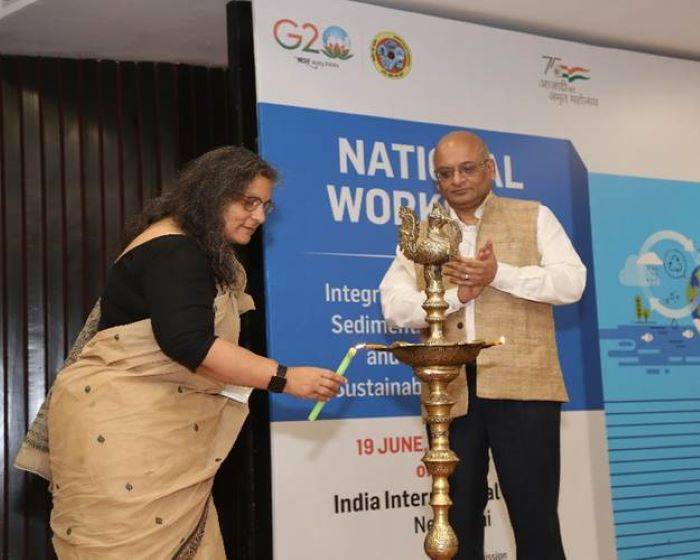
The Central Water Commission (CWC), under the Ministry of Jal Shakti, organized a one-day national workshop on "Integrated Management of Sediments in River Basins and Reservoirs for Sustainable Development" at the India International Centre in New Delhi. The workshop, which took place, aimed to bring together various stakeholders to discuss and formulate sustainable action plans for sediment management in rivers, reservoirs, and water bodies.
The event was inaugurated by Pankaj Kumar, Secretary of the Department of Water Resources, River Development, and Ganga Rejuvenation (DoWR), in the presence of Kushvinder Vohra, Chairman of the CWC, and Debashree Mukherjee, Special Secretary of the Department of Water Resources, River Development, and Ganga Rejuvenation. Over 200 delegates from different central ministries, states/union territories, academic institutes, and implementing agencies of the Dam Rehabilitation and Improvement Project (DRIP) participated in the workshop.
During the workshop, several presentations were made by subject experts on a wide range of topics related to sediment management. These included the national framework on sediment management, sediment assessment studies, the application of geomorphological tools for river morphological health assessment, sedimentation management for national waterways, and modeling tools for basin-scale assessment of sediment loads. Additionally, states and union territories such as Rajasthan, Kerala, Maharashtra, Uttar Pradesh, Karnataka, Tamil Nadu, and Odisha shared their experiences and interventions on the subject.
Key discussions centered around the need for assessing sedimentation rates to evaluate their impact on reservoirs and their useful life. It was widely agreed that short and long-term action plans, along with measures to control silt deposition in reservoirs, need to be prepared and implemented in phases. The participants emphasized the importance of standardized protocols for monitoring and measurements, identification of sediment hotspots, and the development of sediment management plans to reclaim lost storage capacity in the country.
Various sediment management techniques were discussed, including watershed management, catchment area treatment to prevent sediment ingress, and techniques for handling sediment in existing reservoirs such as sluicing, drawdown flushing, and providing large-sized deep outlets. The workshop highlighted the necessity for a coordinated and synchronized approach to reservoir operation and sediment management, especially for projects in cascade within a basin.
The workshop also focused on the development of revenue-based models for desilting reservoirs, as presented by Rajasthan and Kerala. Extensive pre-desiltation studies were discussed, and the participants appreciated the efforts made in this regard. It was suggested that stakeholders should collaborate in developing a Standard Operating Procedure for desilting reservoirs.
Academic institutions such as IIT Roorkee and IIT Kanpur presented new and modern techniques used for assessing sedimentation rates, volumes, and reservoir capacity, including bathymetric survey, satellite remote sensing, hybrid methods, and the use of differential global positioning systems (DGPS). The importance of basic and applied research in predicting river responses to sediment dredging and understanding river morphology was emphasized.
Detailed investigations and modeling integrating GIS techniques were identified as essential for sediment assessment and management, including the use of 2D numerical and 3D physical modeling.









